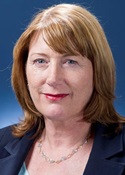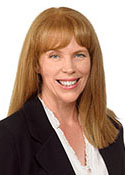Lalor
Margin: Labor 12.2%
Region: Western Melbourne, Victoria
In a nutshell: Lalor was held by successive Labor grandees in Jim Cairns, Barry Jones and Julia Gillard, before passing on to current member Joanne Ryan in 2013.
Candidates in ballot paper order

|
MARION VALE JOANNE RYAN GAYLE MURPHY SUSAN JAKOBI DANIEL SOVA |
Held until the 2013 election by Julia Gillard, Lalor covers safe Labor territory around Werribee in Melbourne’s western suburbs, including Laverton and the rapidly developing Point Cook area at the city end, and lightly populated outskirts as far as Little River to the west. It was created with the expansion of parliament in 1949, prior to which its current area had been accommodated by Corio. At first the electorate extended well beyond its current boundaries to cover country centres as far north as Kyneton and Seymour, but post-war growth had drawn it into roughly its current area by 1969, when a redistribution created the new seat of Burke to cover territory further to the north. To that point the seat had been marginal, and the Liberals gained it for the one and only time in the 1966 landslide. It then returned firmly to the Labor column with a 6.8% shift in the redistribution, followed by a 4.8% swing at the 1969 election.
Lalor was held for Labor from 1949 to 1966 by Reg Pollard, who had previously been member for Ballarat since 1937, and then for the Liberals for a term by Mervyn Lee. With his position undermined by the redistribution, Lee unsuccessfully contested Bendigo in 1969. The seat was held thereafter by three major Labor figures: Jim Cairns (1969-1977), who came to the seat upon the abolition of his inner Melbourne seat of Yarra, and went on to serve as Deputy Prime Minister from June 1974 and Treasurer from December 1974, until the Loans Affair cost him both positions in July 1975; Barry Jones (1977-1998), who was Science Minister for the the first three terms of the Hawke government; and Julia Gillard from 1998 to 2013, who served as Australia’s first female Prime Minister from June 2010 to June 2013, after first deposing and then being deposed by Kevin Rudd.
With Gillard immediately announcing her intention to bow out of politics after losing the prime ministership, factional and gender balance considerations ordained that Lalor would be bequeathed to a woman from the Right. Two such contenders were Kimberley Kitching, a former Melbourne City councillor then serving as caretaker manager of the troubled Health Services Union No. 1 branch, and Lisa Clutterham, an Adelaide-based diplomat. Kitching and Clutterham respectively had the support of long-standing Right faction allies Bill Shorten and Stephen Conroy, who were then experiencing a rift over the leadership issue and a number of preselection rivalries, but in the event neither candidate made it through to the ballot. Clutterham bowed out after a disastrous radio interview with the ABC’s Jon Faine, in which she appeared stumped as to how to finesse her obvious lack of connection to the electorate, while Kitching was reportedly encumbered by hostility towards her husband, controversial VexNews blogger Andrew Landeryou, and instead agreed to commit to an unsuccessful run for a position on the Senate ticket.
The preselection was instead won by Joanne Ryan, Moonee Ponds Primary School principal and the favoured candidate of Gillard. Facing only low-key opposition from two local party members, Ryan reportedly ended up securing 74 votes out of 88 in the local party ballot, and all but one of the 100 votes from the party’s Public Office Selection Committee. Since her entry into parliament, Ryan has served as Opposition Whip in the House of Representatives.
Analysis by William Bowe. Read William’s blog, The Poll Bludger.


